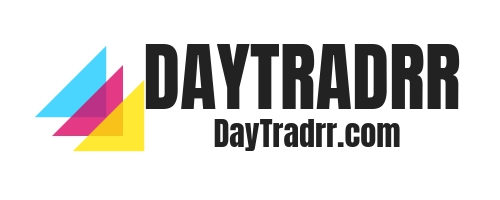She/Her Meaning – What Does “She-Her-Hers” Mean in a Bio?
 She/her meaning: In a signature or bio “she-her-hers” means that the person identifies as female and those are the gender pronouns she prefers. Maybe you have come across “she-her-hers” or “he-him-his” in an email signature or in communication. Or, you may have noticed it used in a person’s biographical data on social media. Were you confused? What does she/her mean in a signature?
She/her meaning: In a signature or bio “she-her-hers” means that the person identifies as female and those are the gender pronouns she prefers. Maybe you have come across “she-her-hers” or “he-him-his” in an email signature or in communication. Or, you may have noticed it used in a person’s biographical data on social media. Were you confused? What does she/her mean in a signature?
Simply put, she-her-hers in a signature means that the person wishes to identify herself as a female. People add these personal gender pronouns to an email signature or communication. When he or she does, that person is telling you that he or she identifies with that particular gender.
Pronoun Vs Personal Gender Pronoun
- A pronoun – is a word that can refer to either the individuals speaking such as I or you. Or it can refer to the person or object being discussed like she, it, them, and this. Gender pronouns such as he and she particularly refer to the people about whom you are speaking.
- A personal gender pronoun – is the pronoun that a person uses to refer to themselves. For instance, if Alex prefers she, her, and hers, you could say, “Alex went to bed because she was tired.”
She/her Meaning in an Email Signature
When someone puts she/her/hers in their email signature, it’s to remove the mystery of their gender identity. That person is clearly indicating that she wants to be identified with the female gender. This is regardless of physical appearance or other cues for gender assumption. Most people in society make automatic conclusions about a person’s gender based on gender expression and initial appearance. Gender expression refers to how a person chooses to display their gender identity. For example, through name, pronouns, dress, hairstyle, behavior, voice, or physical characteristics. Gender expression includes using facilities such as restrooms and locker rooms that correspond to their own gender identity.
If an individual appears to be a man, social norms encourage that he be addressed as a man. Alternatively, if a person appears to be a woman, she should be addressed as a woman. However, gender identity is not as easy as that, and it does not always correspond with gender expression. To complicate the issue further, there are also persons who do not identify as either male or female. In summary, in an email or other correspondence, if someone uses she-her-hers, they are telling you to use those gender-specific pronouns when referring to her.
She/Her Meaning On Social Media
In addition to the use of she/her/hers email signatures, you may notice that it is becoming increasingly widespread on social networking sites. For example, using She/Her in an Instagram bio indicates that the person is stating their pronouns. People are now aware that while speaking about or to that person, they should use she/her. To avoid being misgendered by others, many transgender and non-binary people list their pronouns in their social media bios.
This practice is becoming prevalent even with cisgender and nonbinary individuals. The main reason that more people are sharing and displaying their pronouns is to demonstrate that they respect gender identity. They are conveying a message in a show of solidarity. They respect all personal gender pronouns and will accept the person’s selected gender identification regardless of what it is. Moreover, as more cisgender allies declare their pronouns, the more the habit of asking for pronouns and not presuming gender becomes normalized.
Cisgender vs Straight
When a person is born, the delivery doctor looks at physical characteristics and decides that you are a girl or boy based on what he or she sees. You may or may not identify as the gender you were assigned at birth as you get older and learn more about the notion of gender. However, you are considered to be cisgender, or “cis,” if you identify with the gender that was assigned to you at birth. Being cisgender and straight are not synonymous, but they can coexist. People can be both cisgender and straight.
- Cisgender – is a term used to define a person’s gender identity. It means the person identifies with the gender that was assigned to them at birth.
- Straight – on the other hand, refers to sexual orientation.
Other Personal Gender Pronouns
Different sorts of personal gender pronouns may be used when a person provides a signature. For example, in an email, a memo, a letter, other communication, or on social media platforms. Here are some examples of personal gender pronouns you could encounter:
- He/him meaning – Masculine pronouns, for someone who identifies as a male
- She/her meaning – Feminine pronouns, for someone who identifies as a female
- They/them/their meaning – Gender-neutral expressions for someone who does not precisely identify as male or female.
What is the Difference Between Sex and Gender?
While the terms sex and gender are sometimes used interchangeably, they have different meanings. The physical variations between people who are female, male, or intersex are referred to as sex. A person’s sex is normally assigned at birth based on physiological traits and chromosomal composition. Gender, on the other hand, is a social construct that reflects the social and cultural role of sex within a given group. Gender identity and gender expression are frequently formed in response to one’s environment.
While gender has been regarded as binary in Western society, gender exists on a continuum. A person can identify at any place on this spectrum or completely outside of it. Gender is not easily split into “man” and “woman” categories. People may identify with genders other than the sex assigned at birth. Others may not identify with any gender, and still, others may identify with many genders. Transgender, nonbinary, and gender-neutral identities are examples of these identities. Only the individual can define their gender identity, and this might change over time.
Personal Gender Pronouns – Why They Matter
- You can’t always tell – You can’t always know what someone’s preferred gender pronoun is by looking at them.
- Basic respect – Asking and correctly using someone’s preferred pronoun is a basic way to show respect for their gender identity. When someone is referred to with the wrong pronoun, it can make them feel disrespected, invalidated, dismissed, or alienated.
- No guessing when they tell you upfront – It is a relief to not worry about which pronoun to use. Being told in advance is straightforward and eliminates any guesswork about a person’s gender. Further, it can eliminate any misconceptions when interpreting a person’s gender expression.
She/Her Meaning FAQ
What do transgender and cisgender mean?
The majority of persons assigned female at birth identify as girls or women. Likewise, the majority of those assigned male at birth identify as boys or men. These individuals are cisgender (or cis). However, some people have a personal gender identity that differs from the sex assigned to them at birth. These individuals are transgender (or trans).
Transgender is the “T” in LGBTQ. Trans can also include people who don’t identify with strict male/female gender roles. Other people who don’t identify as either male or female call themselves genderqueer. There are other gender identity terms and labels, but don’t use terms like transgendered, transvestite, tranny, or, he-she — they’re old-fashioned and can be hurtful. It’s always best to respect the words people use to describe themselves. (Source: plannedparenthood.org)
What does he/him or she/her mean after a social media profile?
A pronoun is a word that can be used in the place of a proper noun, such as a person’s name. If someone uses gender pronouns next to their profile name, they are merely letting you know how to address them. This prevents people from making conclusions about one’s gender. It removes the chance of calling someone by the incorrect gender expression.
Up Next: What Is a Trading Desk?
 A trading desk is a department or physical area within a brokerage trading firm or investment bank where securities transactions take place. Depending on the type of financial institution, traders may be trading for their own personal accounts. Or, the desks may be occupied by brokers who operate as agents matching buyers and sellers. Any combination of the two categories of traders may staff the trading desk. Most financial institutions have trading desks that facilitate deal executions in multiple markets. For example, equities, fixed income instruments, futures, commodities, and currencies. These facilities and transactions are critical for maintaining market liquidity. Trading desks are sometimes referred to as a trading floor or the trading area.
A trading desk is a department or physical area within a brokerage trading firm or investment bank where securities transactions take place. Depending on the type of financial institution, traders may be trading for their own personal accounts. Or, the desks may be occupied by brokers who operate as agents matching buyers and sellers. Any combination of the two categories of traders may staff the trading desk. Most financial institutions have trading desks that facilitate deal executions in multiple markets. For example, equities, fixed income instruments, futures, commodities, and currencies. These facilities and transactions are critical for maintaining market liquidity. Trading desks are sometimes referred to as a trading floor or the trading area.
The trading desk is simply a desk or department within a bank or other business. But, it is where various securities such as shares, currencies, bonds, and so on are purchased and sold. Trading desks normally charge a percentage of the commission gained from trading activity. Common categories include equity, fixed income, foreign currency, commodities, and FX. In-house, a trading desk provides a source of market evaluation, structuring of financial goods, and the pursuit of opportunities. Moreover, it supports fulfilling agreements between investors and organizations and selective targeting of clients. Trading desk disadvantages include linked party transactions, a lack of flexibility and little if any transparency.
